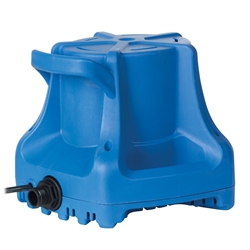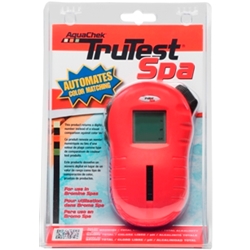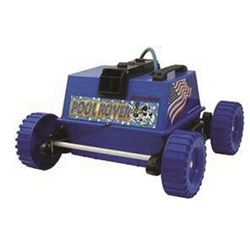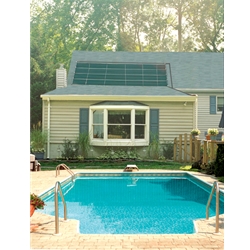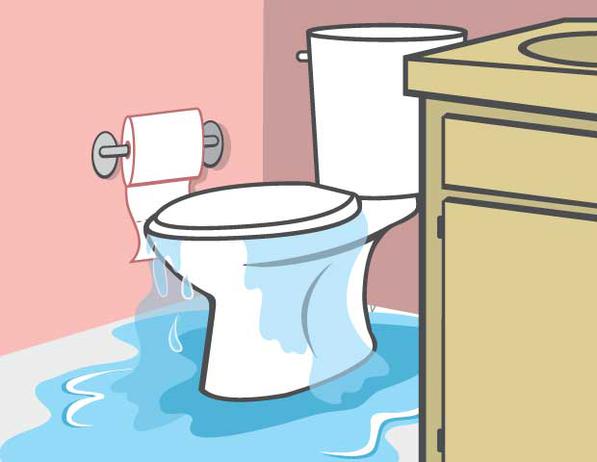With Memorial Day just around the corner, it’s time for pool owners to begin thinking about the annual job of pool opening. Hiring a professional pool service to open your pool will cost you hundreds of dollars, depending upon the size of your pool and the condition it’s in. However, tackling the job yourself is not nearly as daunting as you may think. Here are 10 steps on how to open a pool yourself along with some shortcuts to make the job easier and save you money.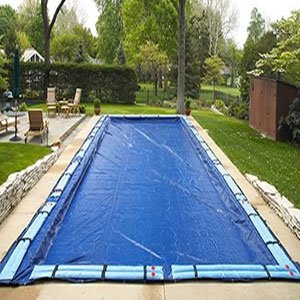
 1.  Remove standing water from the pool cover.
If you have a solid pool cover, the first thing you need to do is to remove any standing water. A submersible pool cover pump will greatly speed up this process. If you have a mesh pool cover, skip this step.
2.  Clean off leaves, branches and debris.
Once the water is drained from the cover, clean off as much debris as you can using a brush or leaf net so this mess won’t fall into the pool when the cover is removed.
Note: Leave the pool cover on until after you have adjusted water level and chemistry.
3. Â Add water to the pool.
Most pools lose water during the winter. Using a garden hose, add enough water to bring the water level in the pool to its normal height.
4. Â Test the chemistry of your pool water.
Testing the chemistry of your pool water for pH, alkalinity, bromine and chlorine is an important step for a clean and safe swimming environment. Do-it-yourself pool and spa test kits that use test strips make water testing easy and accurate. Look for models with digital and automated color matching readouts for best results.
Ideal levels should be: pH – 7.2 to 7.6; total alkalinity – 80 to 120 ppm  (parts per million); bromine – 2.0 to 6.0 ppm; chlorine – 1.0 to 3.0 ppm; and calcium hardness from 150 to 250 ppm.
 5. Adjust and balance chemicals.
Based on the analysis you get back, you’ll need to add certain chemicals to adjust the water chemistry to ensure that it’s safe and comfortable for swimming.   Chemicals can be purchased at swimming pool supply stores and many hardware or home and garden stores or online.
These chemicals include:
- Soda ash to increase pH:
- Muriatic acid or sodium bisulfate to decrease pH;
- Calcium chloride to adjust calcium hardness; and
- Cyanuric acid to inhibit the sun’s ability to burn off chlorine.
6. Â Lift the cover.
The pool cover can be lifted when the water is clear, usually about a week after adding the chemicals. Be sure to run the circulation and filtration system continuously and wait for the clarity of the water to clear. Note that the filter should be cleaned daily and you may have to add more chlorine. Once you can see the pool floor, carefully lift the pool cover off (best done with two people or more). Lay it somewhere flat and protected and brush off dust and debris. Once it has air dried, sprinkle the cover with talcum powder to prevent mold and mildew buildup, fold it loosely and store it in a dry place for the season.
 7.  Vacuum the pool.
After the cover is removed, it’s time to vacuum all the leaves and debris from the bottom. Consider investing in an automatic pool cleaner to eliminate the chore of manually vacuuming. These robotic cleaning machines roam the floor of the pool scrubbing and sucking up dirt and debris. Look for “self-contained†models that don’t require a hose, booster pump or pool filter system connection.
8.  Skim the pool’s surface.
Remove floating bugs, leaves and twigs using a long-handled pool skimmer net.
9.  Inspect your pool’s safety equipment.
Check with your local building and code department to make sure you are in compliance with your municipality’s swimming pool safety laws. Many towns have swimming pool safety laws that require:
- A pool fence at least four feet high around pool and spa areas;
- A self-closing, self-latching gate; and
- A pool gate alarm as another layer of protection.
- A pool alarm is another line of defense you can add to prevent accidental drowning. To protect children, pets and older non-swimmers, consider a Safety Turtle personal immersion alarm system that sounds a loud alarm when the wearer falls or jumps into water.
- To guard against trespassers or curious children when you aren’t home, install a pool surveillance camera such as the Pool Watchdog.  If someone enters the pool area, Pool Watchdog will notify you instantly via an email or text message alert to your mobile device.
10. Â Ongoing maintenance.
Once the job of opening the pool is complete, there are a few ongoing maintenance tasks you will need to address to keep your pool sparkling clean:
- Check and clean the filter;
- Vacuum the pool bottom at least once a week;
- Add water as needed;
- Test the water chemistry every 2-3 days.
Money Saving Tip: If you and your family enjoy swimming in a heated pool but you don’t want the expense of running an electric heater, consider adding a solar pool heating system that uses free renewable energy from the sun.


